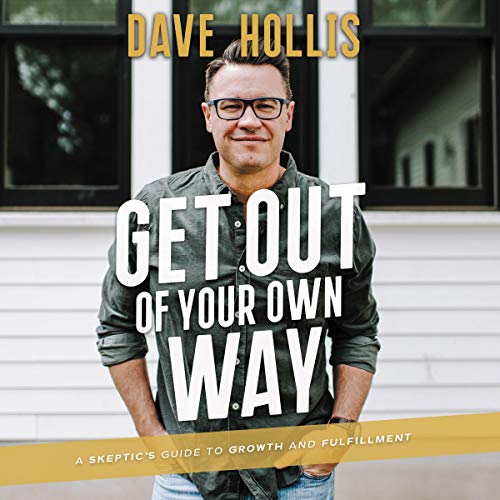HOW TO STOP SELF SABOTAGE AND MOVE FORWARD IN THE NEW YEAR
GET THROUGH THIS TERRIBLE TIME WITH A GREAT ATTITUDETHE MOST IMPORTANT STORIES WE WILL EVER HEAR COME STRAIGHT FROM OUR OWN MINDS.

OVERCOMING SELF-FOCUSED NEGATIVITY
1. Have Daily Negative Thought Time
A paradoxical strategy to gain control over negative thinking is to commit to 10 minutes a day ruminating and reviewing them over and over again. Negative Thought Time (NTT) must be 10 minutes and must be every day. When you have a negative thought during the day, jot it down, and tell yourself that you’ll review them during NTT. Over time, you will gain control and negative thinking will stop. – Julie Kantor, PhD, JP Kantor Consulting
2. Replace the Negative Thoughts
We don’t overcome negative thought patterns, we replace them. For most of us, those negative thought patterns are well-worn neural pathways. Four simple steps:
1. Notice when you have started the pattern.
2. Acknowledge that it’s a pattern you want to change.
3. Articulate what you want to be different.
4. Choose a different behavior — one that serves your goals.
3. Be Your Own Best Friend
We are mean to ourselves. Nearly 90% of self-talk is negative. Three steps:
1. Release it. Let it out to help process, not to dwell. Three minutes, then the pity party is over.
2. Track it. Identify when you have negative thoughts. Awareness will enable reframing.
3. Reframe it. Once you know why you are being mean, consider what your best friend would say to you. Then tell yourself what you need to hear.\
4. Write Instead Of Think
Write down why the negative thought is present. Writing versus thinking helps purge the thought out, and when you can see the words on paper or a screen it is easier to make sense of it and move forward.
5. Make A Conscious Effort To Find Things To Love, Like, And Appreciate
Instead of fighting negative thoughts, consciously reach for better feeling thoughts. One powerful way to do that is to speak (out loud if you can) to what you love, like and appreciate. Heading into a tough talk? “I love the way the coffee tastes today.” “I like the way this chair feels at my back.” “I appreciate the chance to process ideas with my team.” Reach for the relief, and you’ll find it.
6. Ask Yourself Some Tough Questions
Reflect on your answers to some tough questions. 1. What do I get from having negative thought patterns? What’s the reward for me? 2. What do I lose by engaging in negative thoughts? What are the costs? 3. What benefits would I receive from engaging in positive thoughts? What costs are associated with thinking more positively? 4. What in my past made me think negatively? 5. What will I do now?
7. Establish New Habits
Rather than thinking of it in terms of “overcoming” negative thought patterns, think of it in terms of establishing new habits. You do that by directing your attention to subjects where there’s nothing to “overcome”: subjects that you already feel good about, and therefore think positively about. That could be your pet, your painted toe nails, being outside, the beach… Start with something easy.
8. Stop Watching The Morning News
Research has shown just three minutes of negative news in the morning will significantly increase your chances of a negative experience over the course of the day. Research has also shown that a positive mindset increases productivity and satisfaction while reducing error rates. Mindset is a choice, but not always an easy one. Look to eliminate negative influences and stop watching the morning news!
9. Use Affirmations
When you wake up, open your eyes and feel gratitude for the new day. Write down daily affirmations: “I love the people I work with,” “I make positive contributions every day,” or “I am open to inspired thoughts.” If a negative thought creeps in, think of success you’ve had and the feeling that went with it. Positive thinking is a daily task, but worth it.
10. Develop Your Success Routine
Every morning for fifteen years, I’ve done a process I created called “Quantum Programming.” It involves taking time each morning as you wake to meditate and focus on the person you want to be and the quality of life you want to live. You also set a few important goals to keep your momentum building toward your dreams. When you know what you want and are driving at it daily, negativity will fade.
11. Channel Those Thoughts Into Something Constructive
Negative thought patterns can easily take over, but a fantastic (and constructive) trick is to identify what the negative thought pattern is and a project you’re excited about. Then, consciously commit to this: Every time you find yourself focusing on the negative, refocus your thoughts for five minutes on your exciting project. I did this recently and a new initiative is now ahead of schedule!
12. Focus On Gratitude
Gratitude is underrated by most but is essential to a happy life. Life doesn’t get easier, but we become stronger as we reframe difficulties by recognizing all of the little good things going on around us. Keep a Good List and refer to it daily. Also, focus on what you really want and be very specific. A focused, positive mind will attract what it is seeking over time.
13. Try Movement And Meditation
As a registered yoga teacher (RYT-200) and a writing coach and author, I know that you can‘t escape negative thoughts without physically disrupting them. To get out of your head, get into your body. A few minutes of deliberate breath work (seated 10-15 minute meditation) or body movement (like a yoga class)can disrupt those thinking patterns. To get out of your head, move more. Feel more.
via Forbes Magazine:
THESE HAVE BEEN DIFFICULT TIMES… FOR ALL OF US IN THE ARTS ESPECIALLY.
I want you to remember that this was not caused by you, by your work, by your talent, by your attention to your art. This was caused by something external to us all. It wasn’t the President, or the Congress, or the Military, or the economists, or the medical industry.
This was caused by bad actors in a place where bad actors are all too common.
We bear the brunt of it now, and unfortunately, we will continue on for at least the next 6 months.
But I am telling you that there is work to be done. Your work. Your client’s work.
And when this pandemic bullshit is over, the pent up demand may outstrip sourcing. Far too many people have left or been forced out. But those who keep at it, doing the cards, doing the emails, doing the client outreach as if they will explode if they don’t… Well – those people are getting work. And they are at figures a bit less than 2019, they are not disastrously less.
This is a time where negative thinking, self-sabotage, and all that comes with it can reign supreme.
IF. YOU. LET. IT.
I refuse to be dealt negativity, and I keep on pushing everyday. I know you can as well. It isn’t all that hard, it just takes a bit of resolve and the ability to turn off or tune out all the negative stories we seem to be inundated with. Toxic. Terrible.
Make them gone.
Now.
IMAGE ON TOP RIGHT COLUMN: Photo by Simon Migaj on Unsplash
COVER IMAGE: Photo by Антон Дмитриев on Unsplash
3 Tips for Stopping Self-Sabotage
- Don’t be a perfectionist – Perfectionism drives self-sabotage. Pretend you, an artist, are creating a piece of artwork and you make what you feel is a mistake. Instead of working with or around that mistake, you trash the piece of art. This is a prime example of self-sabotage caused by perfectionism. Luckily, you are not stuck with perfectionism. Like self-sabotage, it can be overcome.
- Don’t rob others of your gift – Did you know that self-sabotage can be selfish? This is true when it takes something from other people, including your art. Think for a moment what others’ artwork has added to your life. Now think of what your artwork could add to the lives of your friends, family members, and strangers. Keep this in mind the next time you are tempted to let self-sabotage ruin an artistic project.
- Get to the root of the problem – If you’ve struggled with self-sabotage for a long time, you may want to consider seeking the services of a professional counselor. There is no shame in this. Truth be told, everyone living on planet earth could probably use some counseling. Artists are often very sensitive and feel emotions deeply. Sometimes they use self-sabotage as a cover-up for hurts and wounds. Other times they simply need an objective party to let them know practical ways to stop sabotaging their own artistic success.
A very good book. I have dogeared my pages so I purchased an Audible to take with me on the road. This is the kind of insight far too many books do not get into.
Why We Self-Sabotage
There are many reasons for self-sabotage, but three of the most important ones involve your thinking patterns, fears you may have in intimate relationships, and the tendency to avoid things that are difficult or uncomfortable. Read on to find out more.
1. Faulty thinking
Our human brains tend to be wired to cling to the familiar, to overestimate risk, and to avoid trying new approaches. This tendency, known as the familiarity heuristic, leads us to overvalue the things we know and undervalue things that are unfamiliar. And when we are under stress, we tend to rely on the familiarity heuristic even more. When our brains are tired, we resort to old habits and ways of doing things, even if they don’t work well. We are drawn to go with the familiar, even when a different option offers a clear advantage.
In one study, researchers asked subjects to do a complicated word puzzle. One group performed under time pressure, while the other was told to take as much time as they needed. After the puzzle was done, subjects were told they had to do another puzzle, but were given a choice between a longer puzzle invented by the same person who designed the first puzzle or a short puzzle designed by somebody they did not know. The group who performed under more stressful conditions (time pressure) were more likely to choose the longer puzzle, even though this would put them at a disadvantage. It’s as if their brains got confused trying to compare the advantages of length versus familiarity, and so they resorted to the “familiarity heuristic.”
It’s not always easy to tell when your brain is relying on a heuristic. Try to make important decisions when you’re not stressed and to consider the pros and cons of each choice, rather than just going with something that intuitively sounds like the best choice (but may not be).
2. Fear of intimacy or fear of rejection
We all know people who sabotage relationships when they reach a certain level of intimacy. Some people cheat, others pick fights or get controlling to push the person away, still others reveal all their insecurities or become too needy and clingy. These are all unconscious ways in which our brains fear getting trapped or rejected if we get too close. Many of these patterns are based on childhood relationships with caregivers. If you have “insecure attachment,” you may unconsciously fear repeating the past. Perhaps your parent was rejecting or neglectful, critical, inconsistent, or you had to be the “parentified child.” Parts of our brains remember this pain and begin to act in adult relationships as if we are with our parent (or perhaps do the complete opposite in an extreme way, which gets us into trouble as well).
If your fear of intimacy or rejection is strong, it is better to mindfully allow your insecure or fearful feelings to be there, while actively working to find healthy, mature ways of talking about them, rather than running away or pushing people away. You need to remind yourself that you are an adult now and have a much greater capacity to tolerate stress and rejection and to take care of yourself than you did as a child. Also remind yourself of what you have to gain by staying engaged. Try to be more self-aware and to notice the effects of your behavior patterns on your relationship happiness.
3. Procrastination and avoidance
A third way you may self-sabotage is by not dealing with problems until they get so big that you are forced to deal with them. Or not being able to discipline yourself to get work done on time. There are several potential reasons for procrastinating and avoiding. You may never have learned the skills to break tasks up into smaller pieces, or you may be too tired to plan out a schedule for doing the work. Alternatively, you may feel overwhelmed by the magnitude of the task or feel like an imposter who doesn’t have what it takes to succeed. Self-sabotaging by not getting started, staying up too late, or going out with friends, or watching television instead of working is a very common pattern. In the short term, you manage to avoid the discomfort of an anxiety-provoking or boring and unrewarding task. But in the long term, the things you’ve put off come back to bite you.
You may also procrastinate and avoid because you are perfectionistic, overthink things, or can’t decide where to begin. All of these tendencies tend to have an anxiety component. You can counteract them by giving yourself a time limit to choose or by allowing yourself to make an imperfect choice. It helps to see yourself as being able to learn from experience and improve over time. This is what researcher Carol Dweck calls a “growth mindset.” A growth mindset makes the possibility of failure less scary, whereas if you see your abilities as fixed, you are more likely to avoid performance situations or sabotage yourself so your weaknesses won’t be clearly exposed.
Procrastination and avoidance (as well as addictive behavior) can also be ways of not taking responsibility for your actions. These behaviors allow you to blame outside factors, like not having enough time, if you do poorly, rather than admitting your role in not using your time well. Some of us fear success, because we shun the limelight or fear that others will expect more from us than we can deliver. But rather than facing this fear head-on, we tend to set ourselves up for failure instead.
52: A PHOTOGRAPHIC JOURNAL: EDITION THREE
52: A PHOTOGRAPHIC JOURNAL: EDITON THREE This is Project 52's Photography magazine. We try to do them at least two or three times a year. They are free. Please feel free to share the publication with anyone you think may enjoy the work. ISSUE THREE FINAL VERSION - PDF...
WHAT MAKES THIS PHOTO GREAT (2021 SERIES)
WHAT MAKES THIS PHOTO GREAT: 2021 SERIES ON YOUTUBEhttps://youtu.be/GzOWXPaO8P8 GARY PERWEILERhttps://youtu.be/xSyb4TlrNbc ART KANEhttps://youtu.be/k2y07oLpu7M BERT STERNhttps://youtu.be/EoQvMeZoAfU DAVID EUSTACEhttps://youtu.be/D0ajOAmilag TERRY HEFFERNAN
BEING A SUCCESSFUL FREELANCER IS LIKE PAVING A ROAD
Being a successful freelance artist is like laying asphalt for a new road. Sorta. Let me explain. A road worker does the following: 1. Gets up in the morning. 2. Goes to work without being "inspired". 3. Grabs her shovel, and starts clearing rocks for the paver....
WHY YOU SHOULD NEVER HAVE GIVEN UP YOUR BLOG
Why it is a bad idea to build your house on someone else's land. Back in the early days of the internet publishing was simple. If you had something to say, you would find a forum or similar space and say it. And people would agree or disagree or simply not engage with...
WHAT MAKES THIS PHOTO GREAT: EPISODE TWO, ART KANE
https://youtu.be/xSyb4TlrNbc
HOW TO IMPROVE YOUR PHOTOGRAPHY 3700% IN ONE YEAR
HOW TO IMPROVE YOUR PHOTOGRAPHY 3700% IN ONE YEAR I first heard of the 1% growth principle through James Altucher on one of his podcasts. I think it was the first time, although it seemed very familiar to me so I may have heard it somewhere else. No matter. It made...







